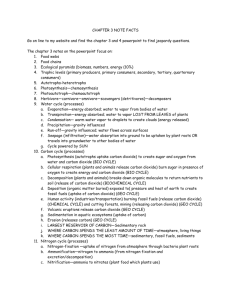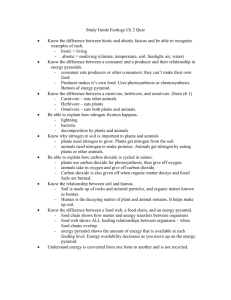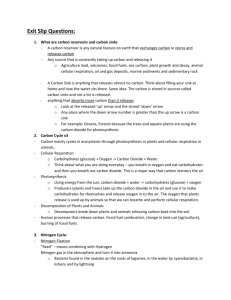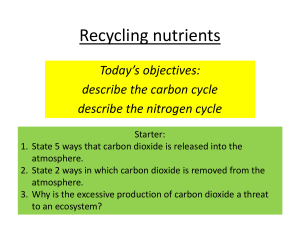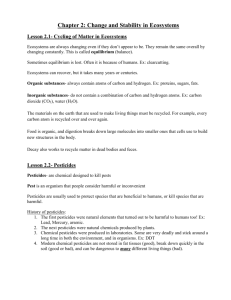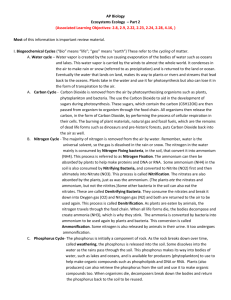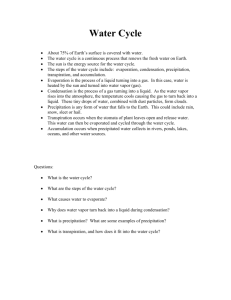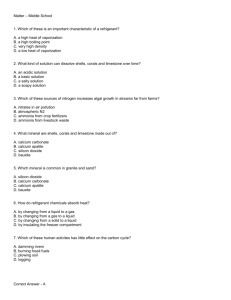Cycles in Nature
advertisement
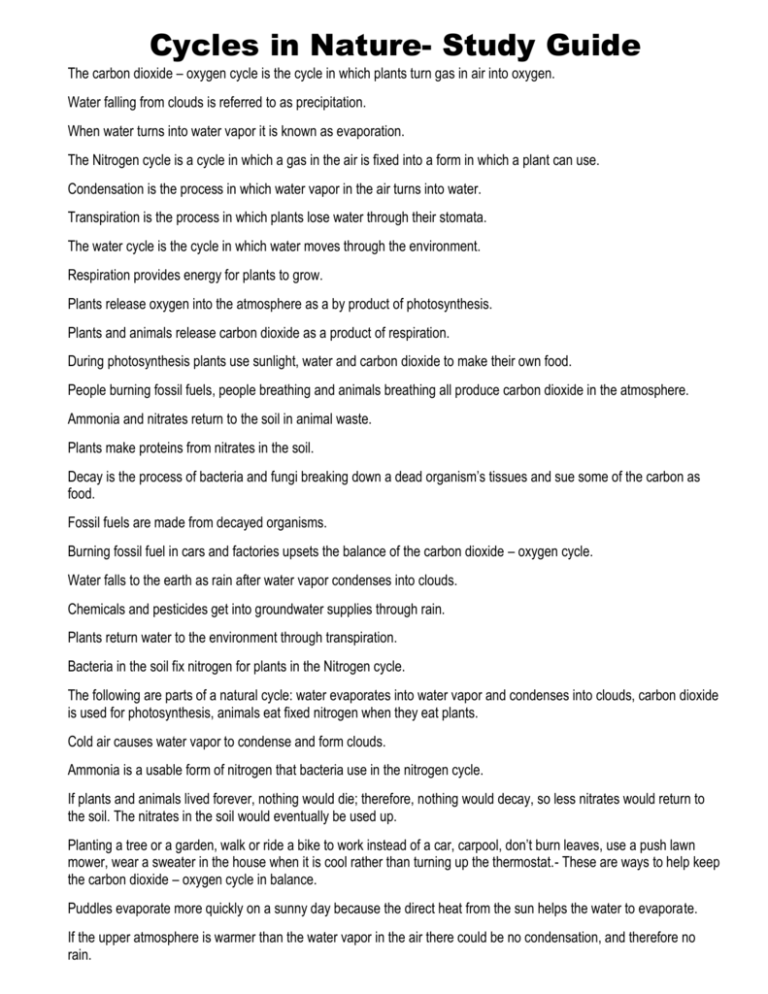
Cycles in Nature- Study Guide The carbon dioxide – oxygen cycle is the cycle in which plants turn gas in air into oxygen. Water falling from clouds is referred to as precipitation. When water turns into water vapor it is known as evaporation. The Nitrogen cycle is a cycle in which a gas in the air is fixed into a form in which a plant can use. Condensation is the process in which water vapor in the air turns into water. Transpiration is the process in which plants lose water through their stomata. The water cycle is the cycle in which water moves through the environment. Respiration provides energy for plants to grow. Plants release oxygen into the atmosphere as a by product of photosynthesis. Plants and animals release carbon dioxide as a product of respiration. During photosynthesis plants use sunlight, water and carbon dioxide to make their own food. People burning fossil fuels, people breathing and animals breathing all produce carbon dioxide in the atmosphere. Ammonia and nitrates return to the soil in animal waste. Plants make proteins from nitrates in the soil. Decay is the process of bacteria and fungi breaking down a dead organism’s tissues and sue some of the carbon as food. Fossil fuels are made from decayed organisms. Burning fossil fuel in cars and factories upsets the balance of the carbon dioxide – oxygen cycle. Water falls to the earth as rain after water vapor condenses into clouds. Chemicals and pesticides get into groundwater supplies through rain. Plants return water to the environment through transpiration. Bacteria in the soil fix nitrogen for plants in the Nitrogen cycle. The following are parts of a natural cycle: water evaporates into water vapor and condenses into clouds, carbon dioxide is used for photosynthesis, animals eat fixed nitrogen when they eat plants. Cold air causes water vapor to condense and form clouds. Ammonia is a usable form of nitrogen that bacteria use in the nitrogen cycle. If plants and animals lived forever, nothing would die; therefore, nothing would decay, so less nitrates would return to the soil. The nitrates in the soil would eventually be used up. Planting a tree or a garden, walk or ride a bike to work instead of a car, carpool, don’t burn leaves, use a push lawn mower, wear a sweater in the house when it is cool rather than turning up the thermostat.- These are ways to help keep the carbon dioxide – oxygen cycle in balance. Puddles evaporate more quickly on a sunny day because the direct heat from the sun helps the water to evaporate. If the upper atmosphere is warmer than the water vapor in the air there could be no condensation, and therefore no rain.
